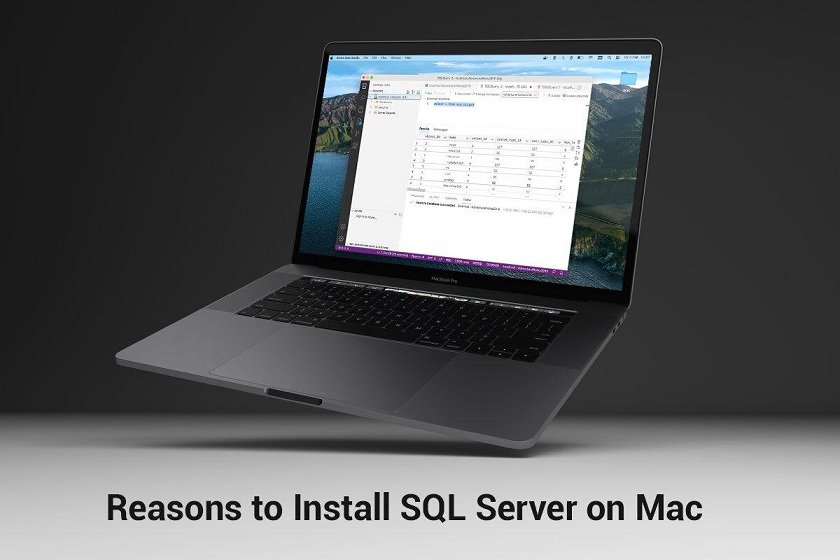While SQL Server has traditionally been locked into the Windows ecosystem, macOS users can now access it with the help of some tools. This opens the doors for Mac developers and data professionals to leverage the rich feature set of Microsoft’s leading database product on Mac hardware.
With many modern applications now built cross-platform, utilizing SQL Server on macOS aligns key infrastructure across teams using varying devices. Additionally, many find workflow advantages in using their preferred Mac machines for writing queries, building models, and managing data in an SQL Server back end.
In this article, we’ll discuss what an SQL server is and explore the top reasons Mac users would want to bring SQL Server into their toolchain. By understanding the key capabilities, you can make an informed decision on incorporating SQL Server into your toolkit.
What Is An SQL Server?
An SQL server is a type of database management software that allows users to store, update, query, and manage relational data. The SQL server software sits on a server and handles requests from multiple client devices to manipulate the database.
A popular free tool used to interface with SQL Server from client machines is called SQL Server Management Studio (SSMS). While this tool only works for Windows, you can download and install Azure Data Studio, which is referred to as the equivalent of the SQL Server Management Studio for macOS
However, it is important to note that you will need a software called Docker to install an SQL Server on your MacBook.
Azure Data Studio allows developers and DBAs on Mac devices to connect to SQL Server just as they would on Windows, providing a familiar graphical interface to query data, manage databases, and optimize performance.
Whether working remotely over VPN or directly on infrastructure on-premises, the tool enables the same administrative capabilities as the Windows version, allowing Mac professionals full native access to harness the power of SQL Server for cross-platform database management.
Reasons You Should Install SQL Server On Your MacBook
There are several benefits of installing an SQL server on your MacBook. Here are some major benefits of installing SQL Server on Mac:
Cross-Platform Development
Installing SQL Server on Mac enables developers to build applications directly on macOS that can leverage the power of SQL Server for data storage and retrieval. This simplifies development workflows by centralizing back-end infrastructure across Windows, Linux, and now Mac environments.
With consistent database connectivity, the same application code can interface with SQL Server regardless of operating system. Testing and troubleshooting also become streamlined working on MacBook Pros. This cross-platform advantage saves substantial development time and hassle compared to heterogeneous data layer platforms.
Database Administration
By running SQL Server on macOS, database administrators, and architects can fully manage operational databases, optimize queries, tune performance, and configure security without needing a Windows VM. DBAs gain significant flexibility to leverage their MacBooks to connect to, manage, and monitor SQL Server infrastructure. This simplifies administrative workflows, especially for remote database admins.
Analytics & Reporting
Both SQL Server Integration Services and Reporting Services now fully support macOS for building reports, dashboards, ETL workflows, and analytics pipelines without requiring third-party tools. Data analysts and BI developers can visualize data quicker by accessing SQL Servers’ advanced graphical services natively on their Mac devices. This brings analytics and reporting capabilities traditionally restricted to Windows now to Mac users.
Access Control Integration
Integrating SQL Server with macOS environments enables administrators to utilize native Active Directory integration for access controls and permissions. Mac users’ domain identities can control access rather than mixed authentication systems across platforms. Centralized management secures infrastructure.
Diverse Testing Environments
By adding Mac environments alongside current Windows infrastructure, SQL Server installation enables more diverse testing environments for applications to run in. Expanding coverage across Linux, Windows and now macOS systems allows developers to test database integrations under additional platforms, bolstering cross-compatibility assurances before reaching customers.
Resource Efficiency
The flexibility to consolidate SQL Server workloads within existing Mac infrastructures improves resource efficiency. Rather than additional investments in specialized Windows computers, Macs can now host databases alongside other processes. This also caters better support for small or distributed teams where Macs predominate local hardware availability.
Cost-Effective Solutions
Between free Express editions, bundled server licensing agreements, and avoiding the overhead of provisioning dedicated Windows servers, various cost-effective solutions arise from installing SQL Server on Mac. This favors new startups, small teams, and large organizations alike looking to enable database capabilities without substantial budgetary impacts.
Enhanced Security Measures
With Macs leveraging native Unix roots that prioritize security, database teams can better follow best practices for permissions, access controls and auditing when creating and interfacing SQL Server instances directly through these trusted platforms. Tight integration promotes safe data handling.
Conclusion
With data playing an increasingly vital role across organizations, adopting flexible database infrastructure empowers more teams to leverage data capabilities. By extending full-fledged SQL Server functionality to macOS devices, additional groups like developers, analysts, and DBAs can now utilize a consistent database platform regardless of operating system preferences.
